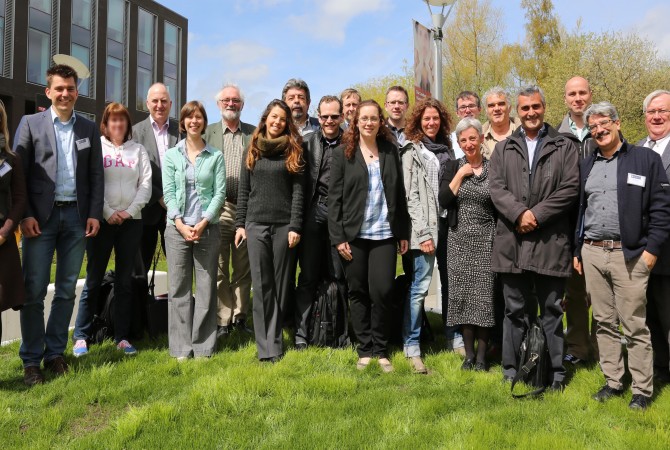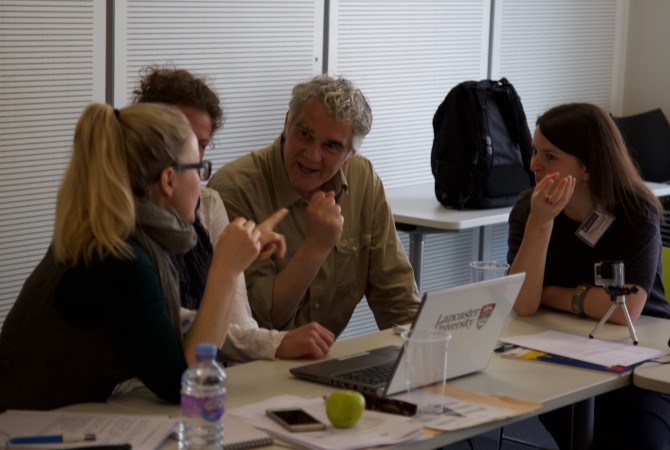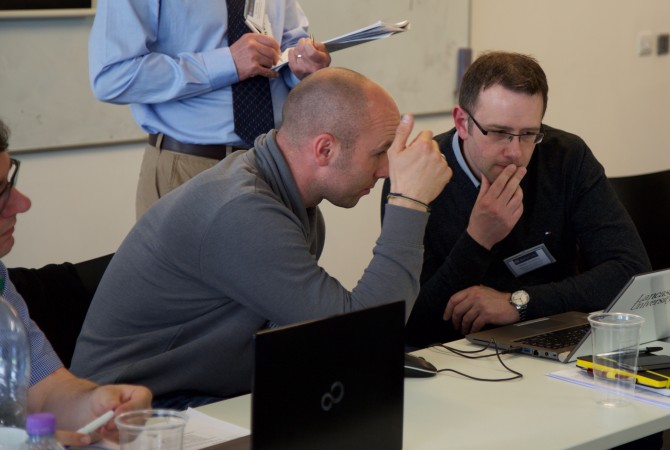On 25th of October 2016 SecInCoRe Team members engaged with international practitioners to demonstrate SecInCoRe concepts and reference implementations in Paderborn. In addition, validation exercises took pace during the workshop. We were glad to welcome a member of the CNBOP from Poland, a member of the Fire Brigade in Paderborn and moreover a member of the Dortmund Fire Brigade who is also a member of our Advisory Board.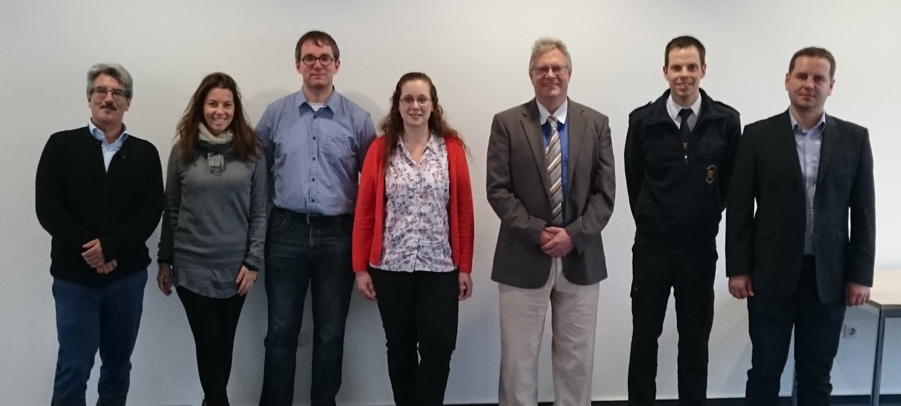
The workshop consisted of collaborative exploration and experimentation with the concept and reference implementations for the semantic framework and knowledge base. It brought together representatives from all partners in SecInCoRe and two representatives from the Lancashire Local Resilience Forum with whom we’ve had long-term interactions. The workshop covered:
- the overall project concept
- details about the search, semantic framework, and knowledge base
- time to explore the reference implementations of these aspects
- discussions around how different forms of transparency could support the design and use of these aspects of the project
- and a debate about structuring the knowledge base as a library or a catalogue.
Overall, the discussions brought together the various perspectives of those involved in ways that lead to new insights about the potential of SecInCoRe. By the end of the workshop, most, if not all, involved found themselves thinking differently about an aspect of the design than before the workshop. Part of this was because of the ability to have something concrete and hands-on to interact around. Part of this was because the workshop was not set up to be designers versus users, but mixed everyone together.
While we all agreed that the reference implementation of the search still needs work to act as a marketing tool, it provided a fantastic opportunity to explore how our concept pairs with design. Doing so helped the project partners in SecInCoRe focus their follow up discussion on how to better demonstrate the overall holistic concept as well as what to focus on within each reference implementation to best show the value and state of the art aspects of the concepts.
Key Points:
- While we are not focusing on interfaces, we need to think critically about how to demonstrate the complex state of the art underlying engineering and design that we are developing.
- The individual emergency responder “user” is not our audience. Rather, because of the level of design and concept, we are more focused on the strategic planners within organisation and institutions.
- A library and catalogue structure for the knowledge base have relatively equal problems and advantages technologically. However, they do offer different social opportunities, which need to be considered to a greater degree.
- Even if imperfect, having some meta-data produced in advance that can then be edited would likely create situations of greater equivalence in entries and more likely encourage user interventions to produce better meta-data overall than having a blank slate which the user is the only source of entry. With that said, having only computer-generated meta-data will not work either.
The second review meeting of the SecInCoRe project took place from 23th to 24th of June in Dortmund. All scheduled deliverables were submitted and significant results in terms of deliverables and scientific publications were published (especially with a strong contribution at ISCRAM 2016). In Dortmund the consortium presented outcomes and the current status also based on Lancaster workshop results. Especially collaboration and use of the demonstrator by invited participants of the fire department of Dortmund was shown on the first day. Besides presentations of all work packages TU Dortmund had presented the laboratory in order to demonstrate the work regarding the SecInCoRe CIS component “Network Enabled Communication system concept”.
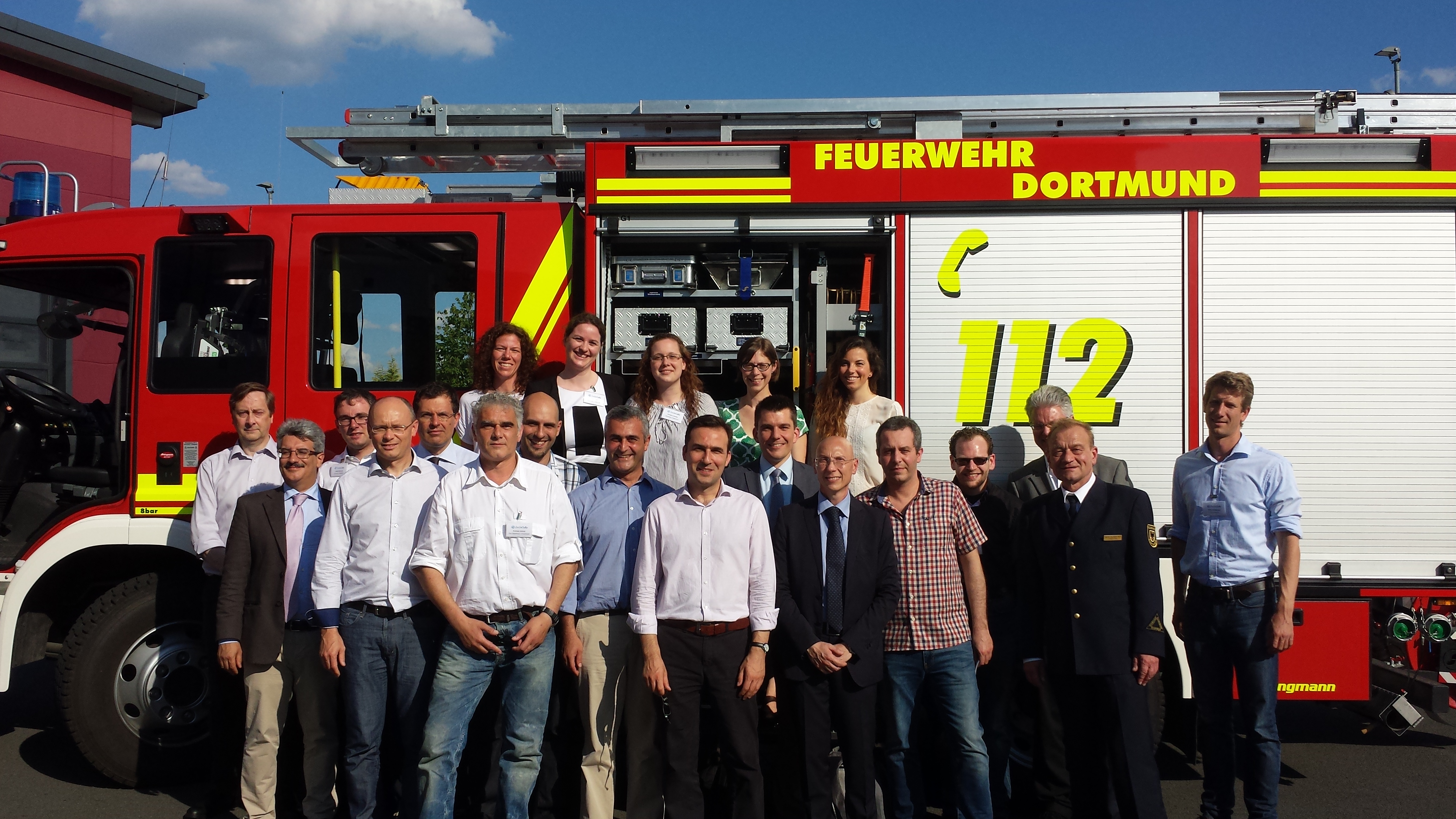
The SecInCoRe team contributed actively to the 14th Public Safety Communication (PSC) Europe Forum conference in Brussels on the 18th and 19th May 2016. Monika Büscher, Katrina Petersen (Lancaster University, leaders of WP2) and Lina Jasmoneite (project EPISECC) organised a full-day workshop on Ethical, Legal, Social Issues in Networked Information Exchange for PPDR, led by the notion of “How to Make IT Good?”. About 30 experts attended the workshop and discussed contributions for a corresponding whitepaper.
During the conference, SecInCoRe was part of a joined session on interoperability in emergency response. Besides contributions with regard to the Pan-European inventory and standardisation aspects, Jens Pottebaum presented a collaborative approach on taxonomy and semantic modelling. Delegates from across Europe (16 countries) participated, representing public safety stakeholders consisting of public safety communication end users, ministries, network operators, technology developers and research organisations. Three representatives from the European Commission were present, as well as a representative from the European Data Protection Supervisor.
The official press release and further links can be retrieved here: 14th PSCE conference – press release
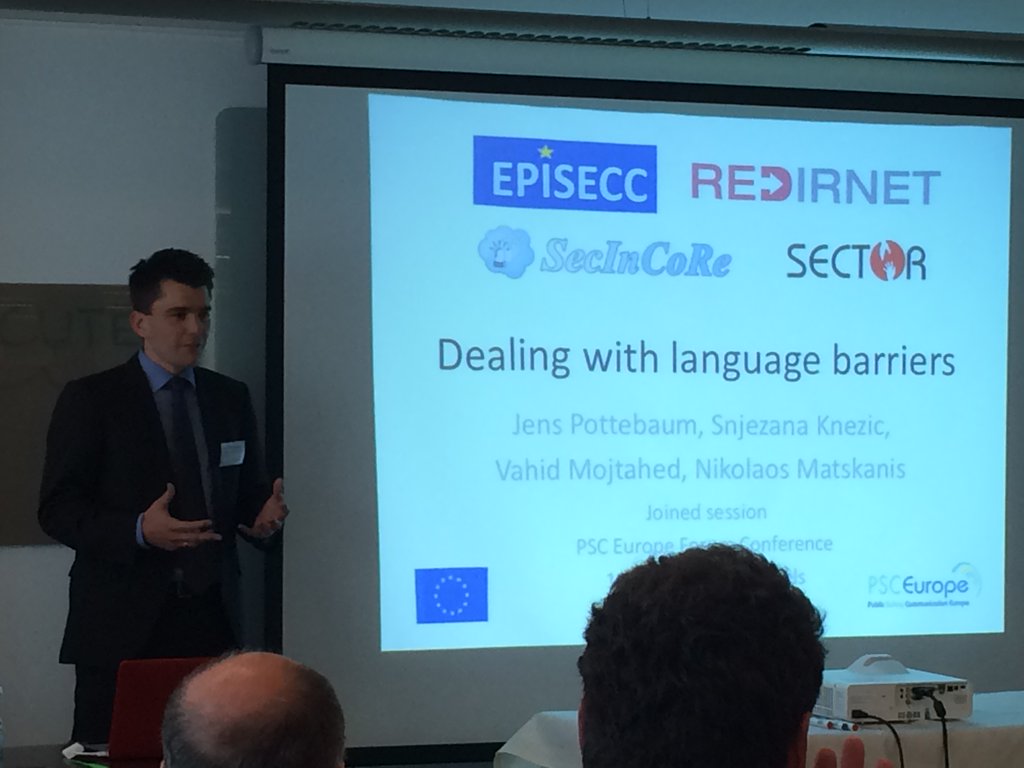 |
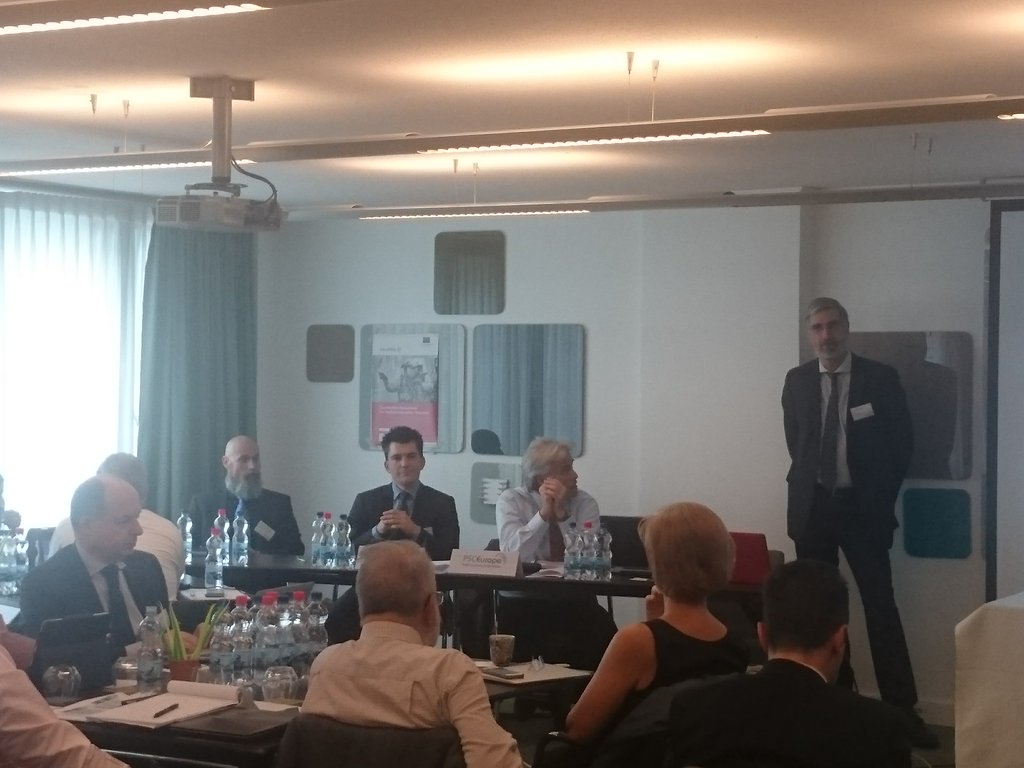 |
SecInCore Team Members engaged with an international group of disaster practioners and planners in a two-day workshop designed to delve into our concept and its design implications for the final year of the project. Participants included member of the Lancashire Local Resilience Forum LRF Pandemic Consequence Management Group, members of the Dortmund Fire Brigade civic protection and technology branches, a representative of the management team for the Bremerhaven Fire Brigade, an experienced Greek CBRNE Planner, and members of our Advisory Board.
The full workshop summary can be found here.
SecInCoRe on tour, part 2 – Innovation for Crisis Management (I4CM) on December 9-10, 2015, Berlin:
SecInCoRe contributed to the I4CM event in Berlin, organised by the DRIVER demonstration project which is supposed to integrate outcomes from relevant mission oriented projects and cross-cutting activities like SecInCoRe. Rainer Koch presented the SecInCoRe approach, the team took part in the exhibition of the event. Discussions about ‘Common Information Spaces’ continued to be one of the key priorities.
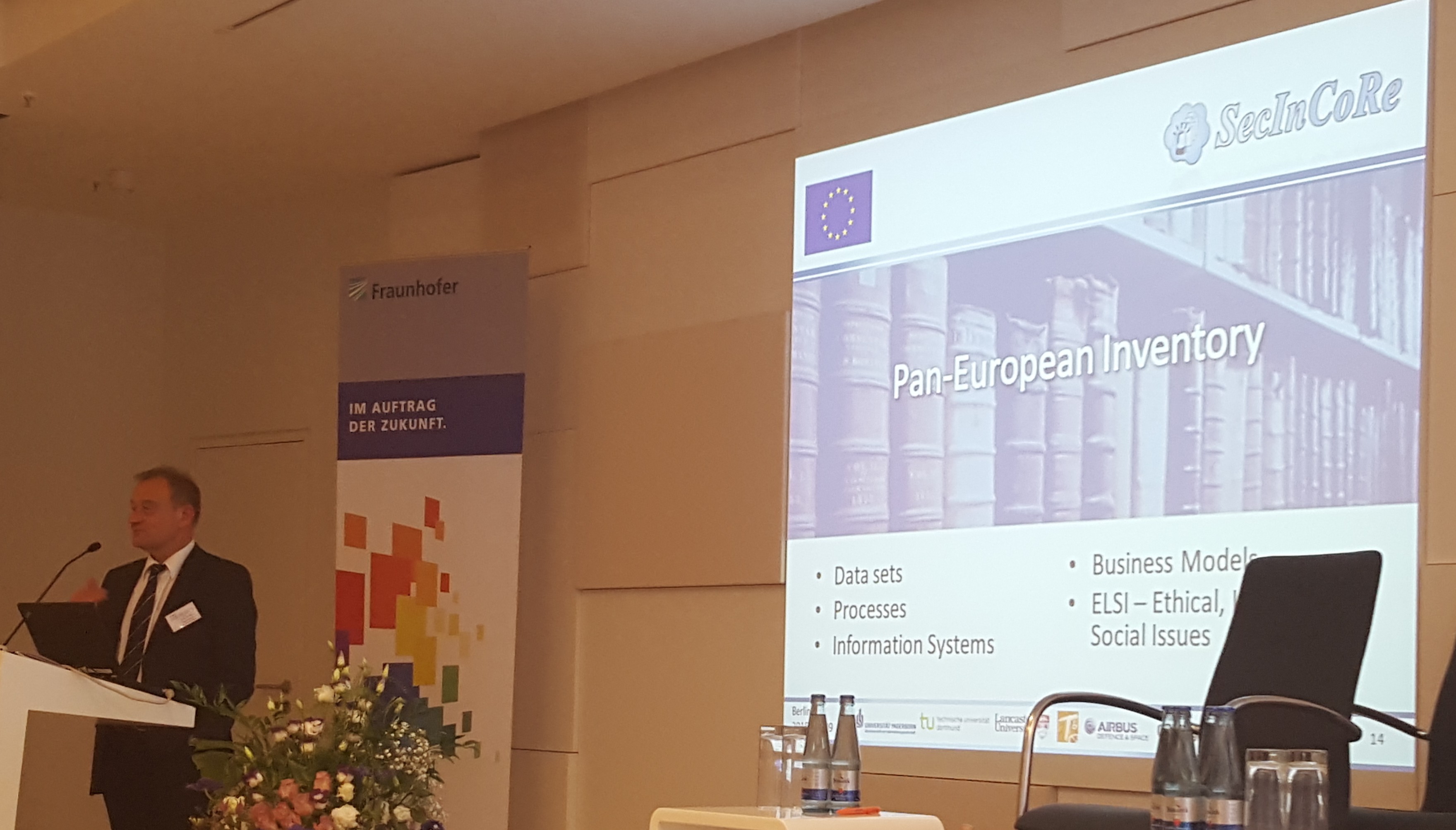
SecInCoRe on tour, part 1 – Public Safety Communications Europe (PSCE) conference on December 8-10, 2015, Oxford University:
Monika Buscher presented work on ‘Networked Information Exchange: Ethical, Legal and Social Issues’, a collaboration between SecInCoRe, and the EPISECC, SECTOR and REDIRNET projects. Discussions have inspired a PSCE Working group. Please find the presentation here and watch out for more information on the working group. For more information please contact the SecInCoRe team.
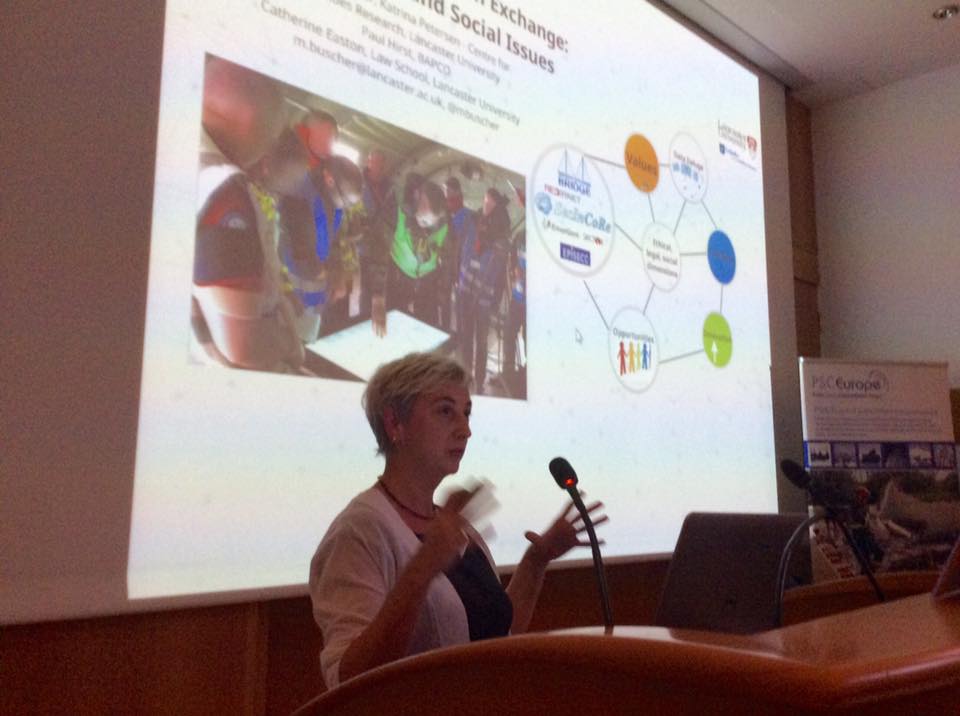
A Large Dissemination Event promoting Synergies and Collaboration will take place in the island of Crete (Greece) the second half of November (27 and 28/11/2014), organized by the Center for Security Studies (KEMEA) of the Hellenic Ministry of Public Order and Citizen Protection.
Monika Buscher presented ” Secure Dynamic Cloud for Information, Communication and Resource Interoperabilty based on Pan-European Disaster Inventory” which you can find here.
Seeking for on demand network setup integrated in the crisis management process within SecInCoRe, the TU Dortmund partner successfully presented two innovative solutions @ Vodafone innovation days on 4th and 5th November at the Vodafone Campus in Düsseldorf, Germany. The presented solutions enable process-oriented, secure, and reliable emergency group communication between rescue fighters at incident scenes, see CNI_Secincore_Vodafone slides. We thank Vodafone, Nokia, SmartMobileLabs, and our visitors for their collaboration and feedback.
For a German blog post about these components which will be part of the SecInCoRe system see also: Ein Fall für die Feuerwehr: Sichere Kommunikation im Katastrophenfall
Monika Buscher and Sarah Becklake gave a keynote speech on ‘Embodying Security, Solidarity, Freedom’ at the Copenhagen Business School, at a Conference on The Values of Tourism (23rd Nordic Symposium on Tourism and Hospitality Research, October 1-4, 2014).
On the face of it, the ideas, experiences, and effects of disasters and tourism could not be further apart. However, disasters and tourism do not occupy different worlds. Disasters can, in a heartbeat, completely disrupt the tourist experience, devalue tourist locations or, as phenomena such as ‘dark tourism’ suggest, have the opposite effect, as even places of disaster can become sites of touristic pleasure (Pezzullo, 2010). But the connections between the two run deeper than their mutual (in)formation. As liminal journeys into the unknown, disasters and tourism both evoke heightened concern with bodily risk and insecurity and, thus, make way for extraordinary (dis)embodied securitization practices. While this is not new, technological innovations are facilitating new forms of securitization, many of which are not easily contained within conventionally conceived corporeal and spatio-temporal phenomenologies (Adey, 2009; Haldrup & Larsen, 2006; Molz, 2012). Furthermore, the informationalization of security in both contexts raises many problematic aspects often seen as involving a trade-off with values of privacy, freedom and justice. Through an examination of disaster and tourism insecurities, we explore how new technologically facilitated (dis)embodied securitization practices are achieved and experienced in moments of liminality, and highlight both their reflexive and subversive potential.
Creatively understood ‘vigilant visualities’ can involve a sense of touch (Amoore, 2007) and enable an embodiment of posthuman phenomenologies that can reclaim freedom, and enact relational ethics and a politics of justice (Boltanski, 1999; Sontag, 2002; Whatmore, 1997). Following this, by tracing examples ranging from the technologically facilitated (re)production of ‘safe bodies’ and ‘safe bubbles’ for tourist experience to the involvement of tourists in disaster response (Rossnagel & Junker, 2010; Schroeder, Pennington-Gray, Donohoe, & Kiousis, 2013; Sigala, 2011), we highlight the emergence of new ethical challenges and opportunities.
The presentation is available here: http://prezi.com/f_x-bpghpeyk/?utm_campaign=share&utm_medium=copy&rc=ex0share
Keywords: disaster mobilities, tourism mobilities, relational ethics, posthuman sociality


